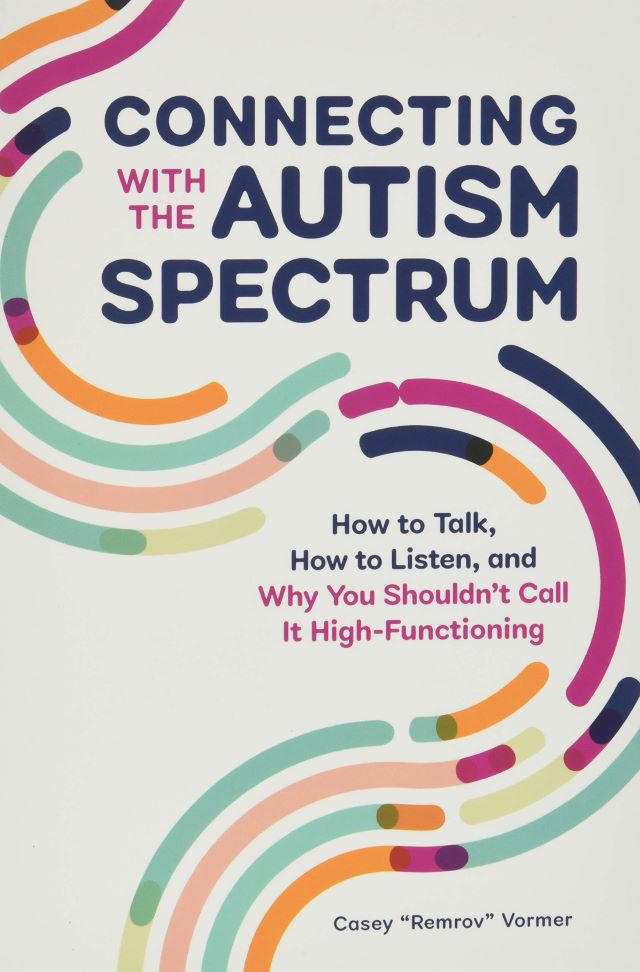BOOK REVIEWS | Teaching from the inside: Remrov writes about being autistic

by Roanne Weisman

The words “I understand” are so easy to say. Yet despite the best of intentions, the meaning behind these two simple words can be profoundly different for each person who speaks them. Casey “Remrov” Vormer, who was diagnosed with autism in his early twenties, wrote Connecting with the Autism Spectrum: How to Talk, How to Listen, and Why You Shouldn’t Call It High-Functioning (2020), to help neurotypical people gain a deeper understanding of the experiences of someone on the autism spectrum. Vormer prefers to call autism a “difference” rather than a “disorder” since autistic people often excel in thought processes and ways of thinking that neurotypical people find challenging.
The author is quick to point out that “If you know one person with autism you know one person with autism.” This means that while many people on the autism spectrum share similar experiences and difficulties, each individual has a unique life story. For this reason, he makes it clear that the book is based only on his own story but hopes that readers can learn from someone “on the inside” and what it feels like to be autistic. He tells readers that his book will “steer you in the right direction to improve your interactions with people on the autism spectrum, so everyone feels heard and respected.”
Vormer accomplishes this task very well, explaining, “Many books about autism [are] written by people who are not on the autism spectrum themselves. Even though they can share valuable information, they don’t know what it really feels like to be autistic.”
To deepen his readers’ understanding, Vormer tells us the story of his life, beginning as a child, progressing through elementary school, higher education, jobs and personal relationships. Throughout, he skillfully weaves in facts about autism, including suggestions of how neurotypical family members, friends, teachers and co-workers can help improve relationships with autistic people in many ways. These include avoiding instructions that are unclear or contradictory, avoiding confusing body language and non-verbal cues, and becoming aware that autistic people can become overwhelmed with too much sensory input. Many autistic people may also have “mind blindness,” which he describes as a lack of awareness of others’ thoughts and knowledge.
But Vormer tempers problems with positivity, also explaining the strengths of many autistic people. These include punctual performance; high productivity; passionate and intense focus on specific interests, including music, mathematics and computer programming; visual thinking (Vormer himself is a talented artist); developing innovative solutions and creative products; and being “pattern obsessed.” He gives the example of Alan Turing, who cracked the Nazi “enigma” code during World War II.









